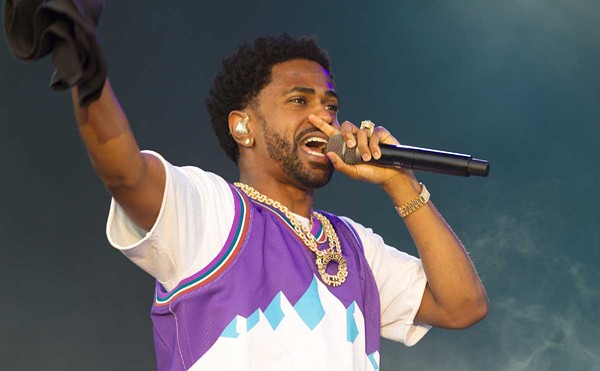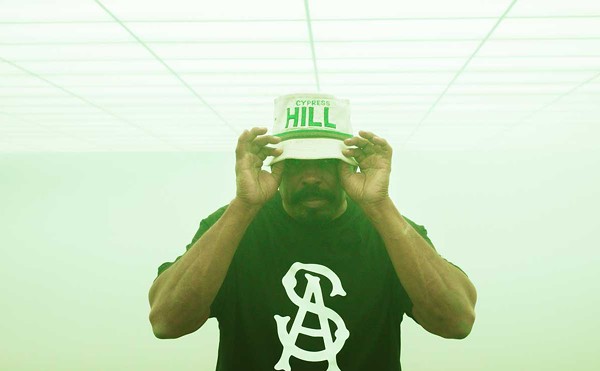It’s encouraging to live on a planet where the term "world music" is both meaningless and universal. Meaningless in that technology and cultural interchange now work at such a pace as to make Earth a truly global music village. Universal in that at any given moment, even in southeast Michigan, you have access to both traditional and pop music from as far away as Japan, Senegal and India.
Sure, the notion of a global village and vitally interconnected cultures is, hopefully, a notion we take for granted by now. But it’s not often that you get a weekend’s worth of evidence. This weekend, when the "2000 Midwest Bhangra Blowout" rolls into Ann Arbor, Indian, English and American cultures – popular and folk – commingle in dance and music.
Just what is bhangra, anyway, you ask?
By definition, bhangra is a traditional music and dance of Northern India (particularly the Punjab region) that was an integral part of Punjabi harvest celebrations. Men and women dress in elaborate, colorful costume (including turbans, brightly colored vests and dhoti – loose-fitting, nearly skirtlike pants for men – and other bright finery). The dancing is accompanied by musicians playing the traditional bhangra rhythm on the dhol drum and, often, singers called boliyan who tell the folk stories of Punjabi life in song.
As Punjabis and other Northern Indians emigrated to England and North America, bhangra integrated itself into modern, urban life, becoming a popular form of music enjoyed at weddings, dances and other community events. Inevitably, too, bhangra was woven into the quiltwork of modern dance music as young Indians fused the traditional music to the cut-and-paste, turntable-based world of sampladelia, often mixing in sound track elements and a wild array of other sounds and textures with the traditional bhangra beat.
Now the influence of the bhangra beat has become a culture unto itself, inflecting greatly the sound coming out of "Bollywood" (the prolific Indian film industry centered around Bombay) to such an extent that many Americans’ idea of "Indian music" is now bhangra (whether you know it or not). From pioneers such as Bally Sagoo to modern pop practitioners such as the Safri Boys, to English dance artists such as Badmarsh + Shri and the Asian Dub Foundation, bhangra’s finding its way into the well from which the whole world draws its musical water.
"Bhangra is at the stage that hip hop was in the ‘80s. You remember how breakdancing was in for so many years, when hip hop exploded, that’s where bhangra is at now," says Gurvinder Singh, one-half of GS Entertainment, which, along with the University of Michigan’s Punjabi Student Association, is presenting the Midwest Bhangra Blowout.
This weekend’s Blowout celebrates both the traditional and the modern faces of bhangra. Friday, bhangra dance teams from around the country – from such geographically diverse universities as UCLA, Cornell, Case-Western Reserve and, of course, U-M – gather at Ann Arbor’s Michigan Theater to compete. The 12 teams range from 6-12 dancers performing routines to largely prerecorded music, both traditional and of the DJ remixed variety.
But between teams, performers – such as a human beatbox who mixes mouth-made hip-hop beats with techno, bhangra and Bollywood rhythms – add a modern spice to the proceedings.
According to Singh, this intergenerational appeal is crucial.
"The community here is so dispersed and we’re trying to get it to come together," she says, stressing the ability of events such as this to bring together a community divided by cultural and, importantly, generational differences.
"We want our parents to come down. Our community is so divided, geographically and otherwise. Basically, we really don’t have that many events here to get together. The music and the dance get beyond that barrier. It’s something they can share and they don’t bring their differences to it. Especially with the younger crowd trying to adjust to western and eastern."
She stresses, though, that this is not an Indian-only event. In fact, it’s a good opportunity for cultural exploration in a city that doesn’t offer many windows of opportunity compared to other major metropolitan areas.
In some cities, Toronto for example, one can pop into mom-and-pop music and video shops and choose from a selection of hundreds of tapes by dozens of artists working within the bhangra spectrum – from straightforward, traditional, acoustic dhol and tabla bhangra to densely layered, sample-heavy bhangra that very much embraces DJ culture and the postmodern musical landscape.
And it’s Friday night of the Blowout when the young, global, modern face of bhangra really comes to play. DJ-remixer and "godfather of modern bhangra," Sagoo headlines "Aaja Nach Le," a dance party at Ann Arbor’s Jeffrey Arena.
Think of Friday’s Blowout finale as a culture-conscious rave – bhangra your head and move your dancing feet. It’s a harvest of international culture – so let’s celebrate it.
![]()
For more information on bhangra, visit Umich.edu/~pso or Bhangranet.com.
Chris Handyside is a freelance writer for Metro Times. Send comments to [email protected]




